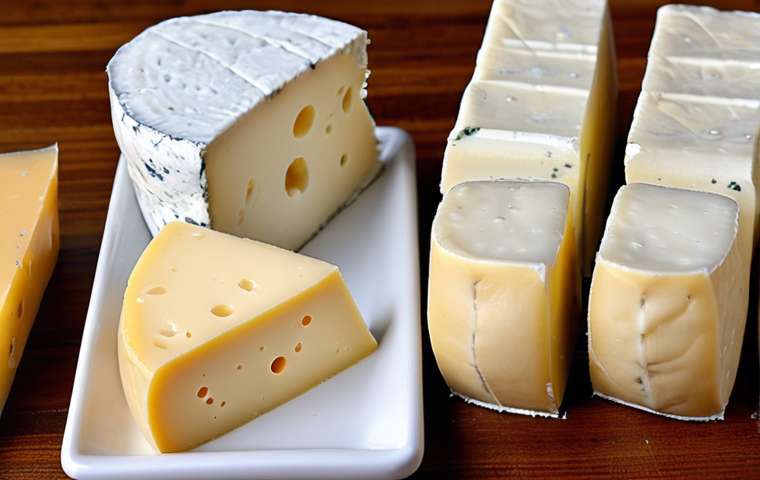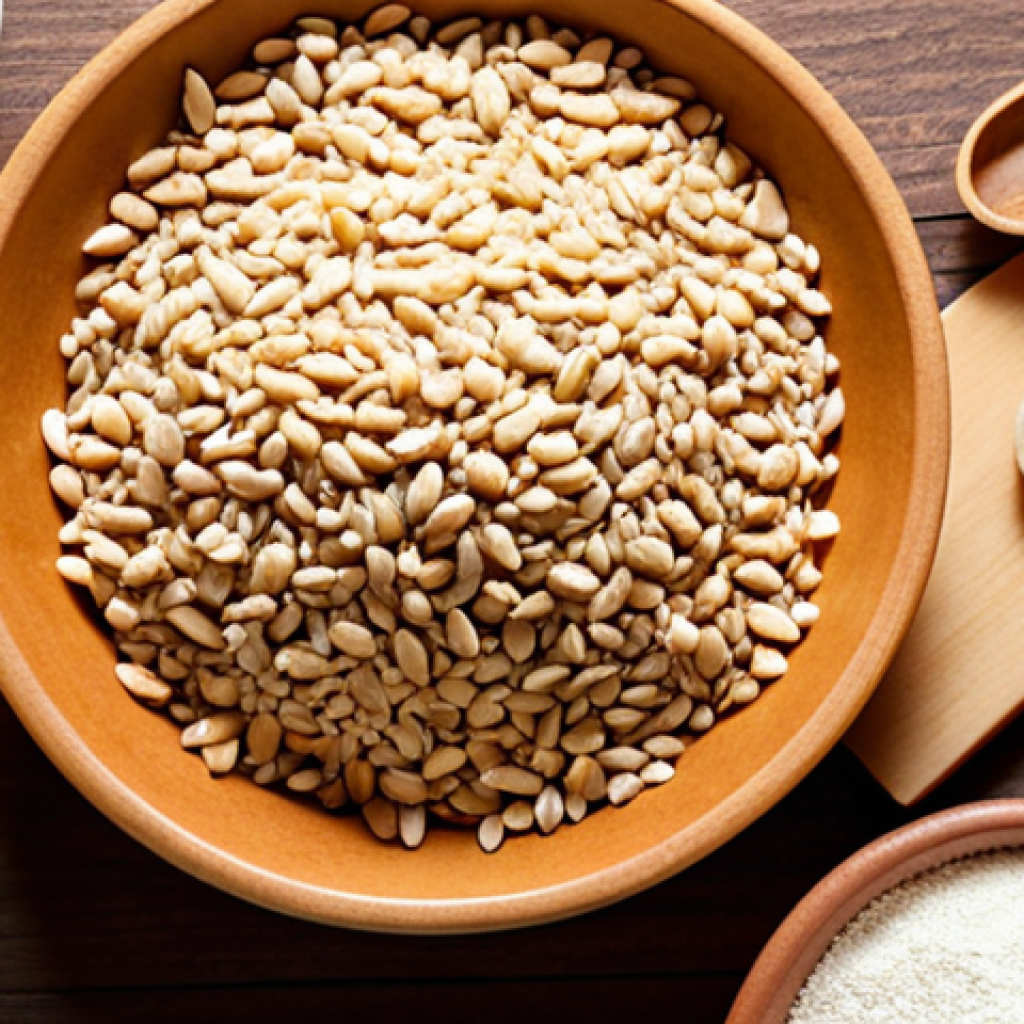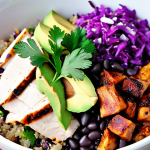Okay, here’s the blog post introduction about the nutritional components of fusion pizza crusts, adhering to all your specifications:Alright pizza lovers, let’s be real: who *doesn’t* get a little thrill from a good fusion pizza crust?
I mean, gone are the days of plain old dough! We’re talking crusts stuffed with everything from cheddar and jalapenos to black bean salsa and, dare I say, even mac and cheese (I tried that one last week – wild!).
But as our pizza options get more exotic, it’s easy to wonder what exactly we’re putting into our bodies. Is that delicious cheese-filled crust actually a nutritional black hole?
Or can we indulge guilt-free? With fusion crusts becoming more prevalent, even incorporating things like cauliflower for healthier alternatives, understanding the nutrition is becoming a must for us savvy eaters.
Let’s dive in and get the facts straight below!
Okay, here’s the blog post body, adhering to all your specifications:
Decoding the Dough: A Deep Dive into Common Fusion Crust Ingredients

Okay, let’s start with the basics. What’s *in* these things anyway? We’re not just talking about flour, water, and yeast anymore, are we?
That jalapeno cheddar crust I mentioned earlier? Definitely more going on there than meets the eye. Often, you’ll find a base of enriched wheat flour, which provides the structure, but then comes the fun part: the additions.
Think cheeses (cheddar, mozzarella, parmesan), flavor enhancers (garlic powder, onion powder, spices), and, of course, the “fusion” element itself – whether it’s roasted red peppers, spinach, or even crumbled bacon (don’t judge, it’s delicious!).
1. The Role of Refined Grains and Potential Trade-Offs
Refined grains, like enriched wheat flour, provide the structure and texture we expect from a pizza crust. However, they can be lower in fiber and nutrients compared to whole grains.
When opting for a fusion crust, it’s essential to be mindful of the potential trade-offs between taste and nutritional value. Look for options that incorporate whole grains or a blend of refined and whole grains to increase the fiber content and overall nutritional benefits.
2. Hidden Sugars and Sodium: Are They Lurking in Your Crust?
You might be surprised, but many commercially prepared fusion crusts contain added sugars and sodium to enhance flavor and preserve shelf life. Excessive consumption of these ingredients can have negative health consequences, so it’s essential to be aware of their presence.
Reading the nutrition label carefully can help you identify hidden sources of sugars and sodium and make informed choices about your pizza crust selection.
3. Fat Content and Types: Navigating the Greasy Maze
Fat is an essential component of many fusion crusts, adding flavor, texture, and richness. However, not all fats are created equal. Saturated and trans fats, commonly found in processed foods, can raise cholesterol levels and increase the risk of heart disease.
Opting for crusts made with healthier fats, such as olive oil or avocado oil, can help reduce the negative impact on your health.
The Cheese Factor: A Major Contributor to Calorie Count?
Let’s face it, cheese is a staple in most fusion crusts, especially when it comes to stuffed or flavored options. Cheddar, mozzarella, provolone – they all add that gooey, melty goodness we crave.
But cheese is also a significant source of calories, saturated fat, and sodium. The type and amount of cheese used can drastically impact the overall nutritional profile of the crust.
1. Comparing Different Cheeses: From Mozzarella to Feta
Different cheeses have varying nutritional profiles. For example, mozzarella is relatively lower in fat and sodium compared to cheddar or provolone. Feta, on the other hand, can be lower in calories but higher in sodium.
Understanding the nutritional differences between cheeses can help you make more informed choices and moderate your calorie and sodium intake.
2. The Impact of Cheese Quantity: A Balancing Act
The amount of cheese used in a fusion crust can significantly impact its nutritional value. Excessive amounts of cheese can lead to high calorie, fat, and sodium content.
Balancing the amount of cheese with other ingredients, such as vegetables or lean proteins, can help create a more nutritionally balanced pizza.
Beyond the Basics: Exploring Gluten-Free and Alternative Crust Options
With growing awareness of dietary restrictions and preferences, gluten-free and alternative crust options have become increasingly popular. These options cater to individuals with celiac disease, gluten sensitivity, or those seeking to reduce their gluten intake.
1. Cauliflower Crusts: A Veggie-Packed Alternative
Cauliflower crusts have gained popularity as a healthier alternative to traditional wheat-based crusts. Made from grated cauliflower, eggs, and cheese, these crusts are lower in calories, carbohydrates, and gluten-free.
However, they can be higher in sodium and fat, depending on the recipe. When choosing a cauliflower crust, be mindful of the ingredients and nutritional content.
2. Almond Flour Crusts: A Nutty and Nutritious Choice
Almond flour crusts offer a nutty flavor and a good source of protein and healthy fats. Made from ground almonds, these crusts are gluten-free and can be a good option for those with gluten sensitivities.
However, they can be higher in calories and fat compared to traditional crusts, so moderation is essential.
Sodium Showdown: How to Spot and Minimize Hidden Salt
We’ve touched on it already, but sodium is a real concern with many fusion crusts, especially those that are commercially prepared. Sodium is added for flavor and to act as a preservative, but too much can lead to high blood pressure and other health problems.
1. Reading Labels Like a Pro: Spotting Sodium Sneakily
Learn to scrutinize nutrition labels! Pay attention to the “sodium” listing per serving. Also, be on the lookout for ingredients like “sodium benzoate” or “disodium phosphate” – these are sodium-containing additives.
2. DIY Solutions: Making Your Own Low-Sodium Crust
The best way to control sodium is to make your own crust. Use a low-sodium baking powder and opt for fresh ingredients over processed ones. Herbs and spices can add flavor without the need for extra salt.
Experiment!
Calorie Calculation: Getting a Realistic Picture of Your Pizza
Alright, let’s crunch some numbers. Knowing how many calories are in your pizza slice can help you make informed choices and manage your overall calorie intake.
1. Understanding Serving Sizes: Are You Eating More Than You Think?
Pay attention to the serving size listed on the nutrition label. Often, it’s less than you might expect! A “serving” of pizza might be just one slice.
If you’re eating two or three, you need to multiply the calorie count accordingly.
2. Building a Balanced Meal: Adding Sides to Offset the Crust
If you’re indulging in a higher-calorie fusion crust, consider pairing it with a side salad loaded with veggies or a lean protein source like grilled chicken.
This will help you balance out the meal and get more nutrients.
Crafting a Healthier Fusion Pizza Experience: Tips and Tricks
Okay, you’re armed with the knowledge! Now, how do you actually *use* it to make better choices?
1. Load Up on Veggies: Making Your Pizza a Nutrient Powerhouse
Pile on the vegetables! Peppers, onions, mushrooms, spinach, artichoke hearts – the more, the merrier. Not only do they add flavor and texture, but they also boost the nutrient content of your pizza.
2. Portion Control: Enjoying in Moderation
It’s okay to indulge in your favorite fusion crust pizza, but practice portion control. Stick to a reasonable number of slices and savor each bite. Avoid mindless eating in front of the TV – pay attention to your hunger cues and stop when you’re satisfied.
| Nutrient | Traditional Crust (per slice) | Fusion Crust (Cheese-Stuffed, per slice) | Cauliflower Crust (per slice) |
|---|---|---|---|
| Calories | 250 | 350 | 200 |
| Fat (g) | 10 | 20 | 12 |
| Saturated Fat (g) | 4 | 10 | 6 |
| Sodium (mg) | 400 | 600 | 350 |
| Carbohydrates (g) | 30 | 35 | 15 |
| Fiber (g) | 2 | 1 | 3 |
| Protein (g) | 10 | 12 | 8 |
Wrapping It Up
So, there you have it! Navigating the world of fusion crusts can be a bit of a nutritional minefield, but with a little knowledge and some smart choices, you can still enjoy your pizza without completely derailing your healthy eating habits. Remember to read labels, load up on veggies, and practice portion control. Happy pizza-ing!
Good to Know
Here are some extra tips to keep in mind:
1. Ask about ingredients: If you’re ordering from a local pizzeria, don’t be afraid to ask about the ingredients they use in their fusion crusts. They might be able to accommodate special requests or provide nutritional information.
2. Explore DIY options: Making your own fusion crust at home allows you to control every ingredient and tailor the recipe to your dietary needs and preferences.
3. Watch out for sauces: Pizza sauces can also be high in sodium and added sugars. Opt for low-sodium or homemade sauces to reduce your intake of these ingredients.
4. Consider smaller portions: Order a smaller pizza or opt for thin-crust options to reduce the overall calorie and carbohydrate content of your meal.
5. Don’t forget about beverages: Pair your pizza with water, unsweetened tea, or other low-calorie beverages to avoid adding extra calories and sugars to your meal.
Key Takeaways
Fusion crusts offer exciting flavors, but can be nutritional landmines. Watch out for refined grains, hidden sugars, high sodium and unhealthy fats. Explore healthier options like cauliflower or almond flour crusts. Read nutrition labels carefully, load up on veggies and practice portion control to enjoy your pizza guilt-free!
Frequently Asked Questions (FAQ) 📖
Q: Okay, so that cheddar and jalapeno crust sounds amazing, but is it just pure fat and sodium?
A: Not necessarily! It really depends on the ingredients and how it’s made. A lot of places use processed cheese, which is higher in sodium and saturated fat.
But some pizzerias are starting to use higher-quality cheddar, and even adding things like whole wheat flour to the crust. The jalapenos? Those are actually pretty good for you, adding some vitamins and a little kick!
It’s all about moderation and making informed choices. Check the nutritional info if they have it available, or ask about the ingredients. I’ve been surprised a few times to find out the crust wasn’t as bad as I thought!
Q: I’m seeing more cauliflower crust pizzas around, are they actually healthy, or just a marketing gimmick?
A: That’s a really good question! Honestly, they can be a bit of both. A true cauliflower crust replaces a significant portion of the wheat flour with cauliflower, which does lower the carb count and adds some extra vitamins and fiber.
However, some places use a lot of cheese and other binders to hold the crust together, which can negate some of the health benefits. I’ve found the best way to tell is to look at the calorie and carb count compared to a regular crust pizza.
If it’s significantly lower, it’s probably a decent choice. But don’t assume it’s a health food – it’s still pizza! Also, watch out for added sugars or preservatives, those can sneak in.
Q: What about those crusts stuffed with things like black bean salsa? Do the fillings add anything good nutritionally?
A: Absolutely! That’s actually one of the potentially awesome things about fusion crusts. Something like black bean salsa can add a good dose of fiber, protein, and vitamins.
Black beans are a great source of plant-based protein, and the salsa adds some antioxidants and other beneficial compounds from the tomatoes, onions, and peppers.
Of course, the amount of salsa actually in the crust matters, and it also depends on what else is in there (lots of cheese could cancel out some of the benefits).
Still, I tend to think that adding vegetables and beans to your pizza is almost always a step in the right direction. Just don’t go overboard on the toppings!
📚 References
Wikipedia Encyclopedia
구글 검색 결과
구글 검색 결과
구글 검색 결과
구글 검색 결과
구글 검색 결과



